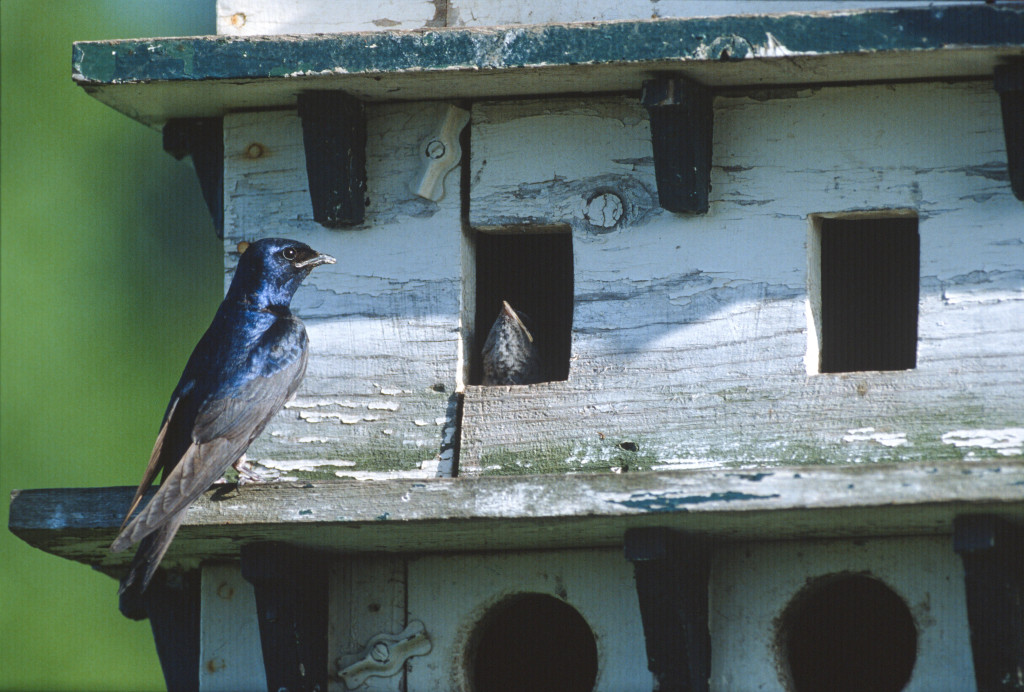
By Alie Mayes, Community Science Specialist
My niece, Rowan, just turned 7 years old. Her number one passion is dragons – the winged, flying creatures that come in a variety of sizes and colors. Maybe this love for dragons is why out of all my nieces and nephews, Rowan is the most interested in birds, which are also winged, flying creatures that come in a variety of sizes and colors.
Recently, I went back home for a few days to stay with my Nan. Rowan’s family came over to help me weed the garden beds, and Rowan noticed Nan’s bluebird boxes and started telling me about a birdhouse she designed. She explained that her bird house will have multiple compartments for birds to live together, like a bird-y apartment complex. Listening, I couldn’t help but notice it sounded a lot like a purple martin house.

The purple martin is North America’s largest swallow. The males are black with a gorgeous iridescent blue-purple. The females are a more inconspicuous brown. Like other swallows, they are insectivores and have the sleek, pointed wings that aid in their acrobatic pursuit of prey. Also, like other swallows, they are known to nest in colonies.
In the west, purple martins mainly nest in natural cavities, like woodpecker holes. However, purple martins living in the Eastern United States have traded in their country digs for urban living. They primarily nest in human-made structures. These include structures especially made for them, including plastic or organic gourds and larger, communal purple martin houses.
So why have purple martins become so dependent on human landlords? This could be because competition for nesting areas is so fierce. More aggressive cavity nesters like house sparrows and starlings are known to take over the martins’ nests. So, having humans manage the nests can help limit the success of these invasive birds. People do this by keeping the entrance to the cavity closed until the purple martins start returning to the area.
Human landlords also ensure that the houses they put up are ideal for the species. Organizations like the Purple Martin Conservation Alliance provide detailed information about optimal nest box structure, placement, maintenance and predator protection. When you start looking into all of the care and detail purple martin landlords put into their craft, it is easy to see why the martins may have greater success utilizing these nest boxes over a natural cavity.
Now, it may very well be a coincidence that Rowan’s favorite dragon just happens to be a purple variety, which she calls “Space Belly,” and that her bird house design just happens to resemble a purple martin house. But I think we might just have a future purple martin landlord in the family.
This article is part of the Nebraska Nature in Color series. This limited series will run monthly from December 2023- June 2024.
